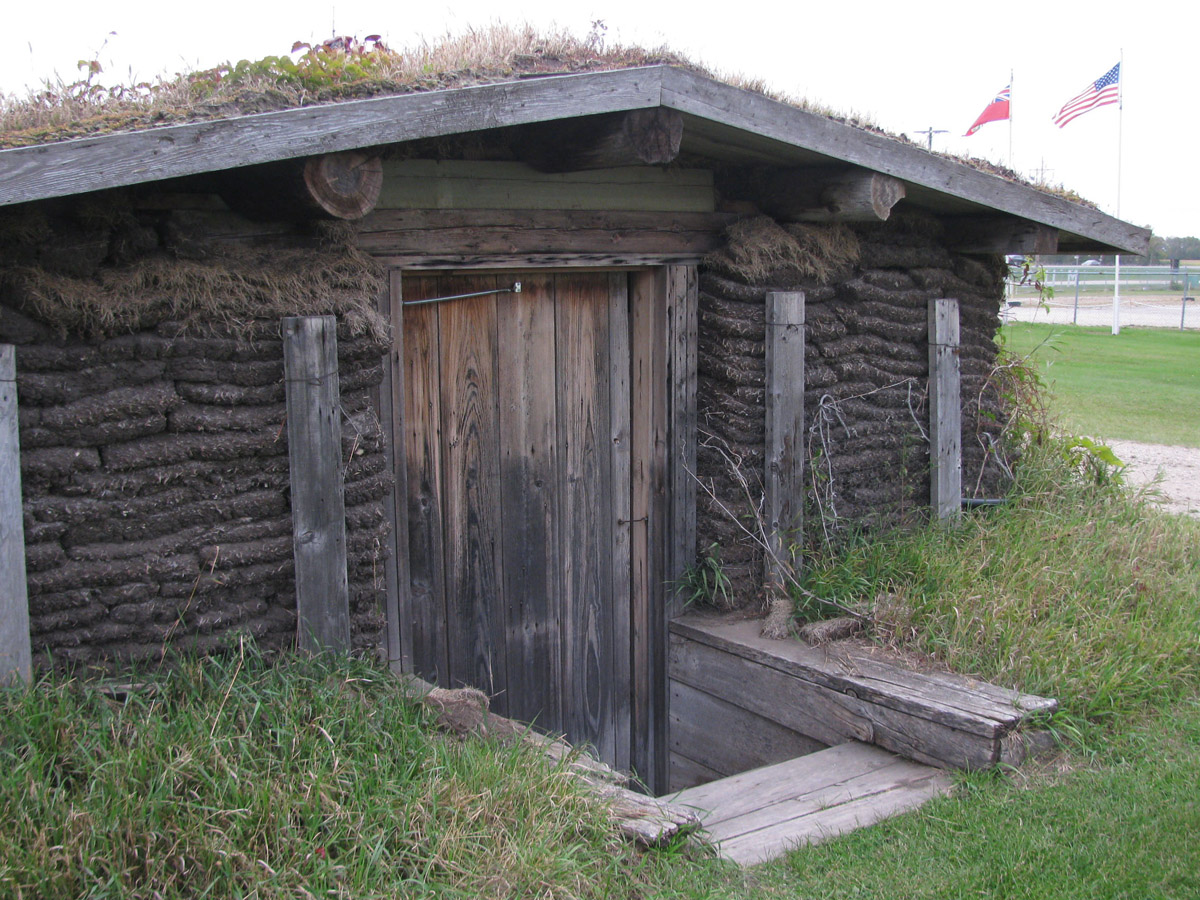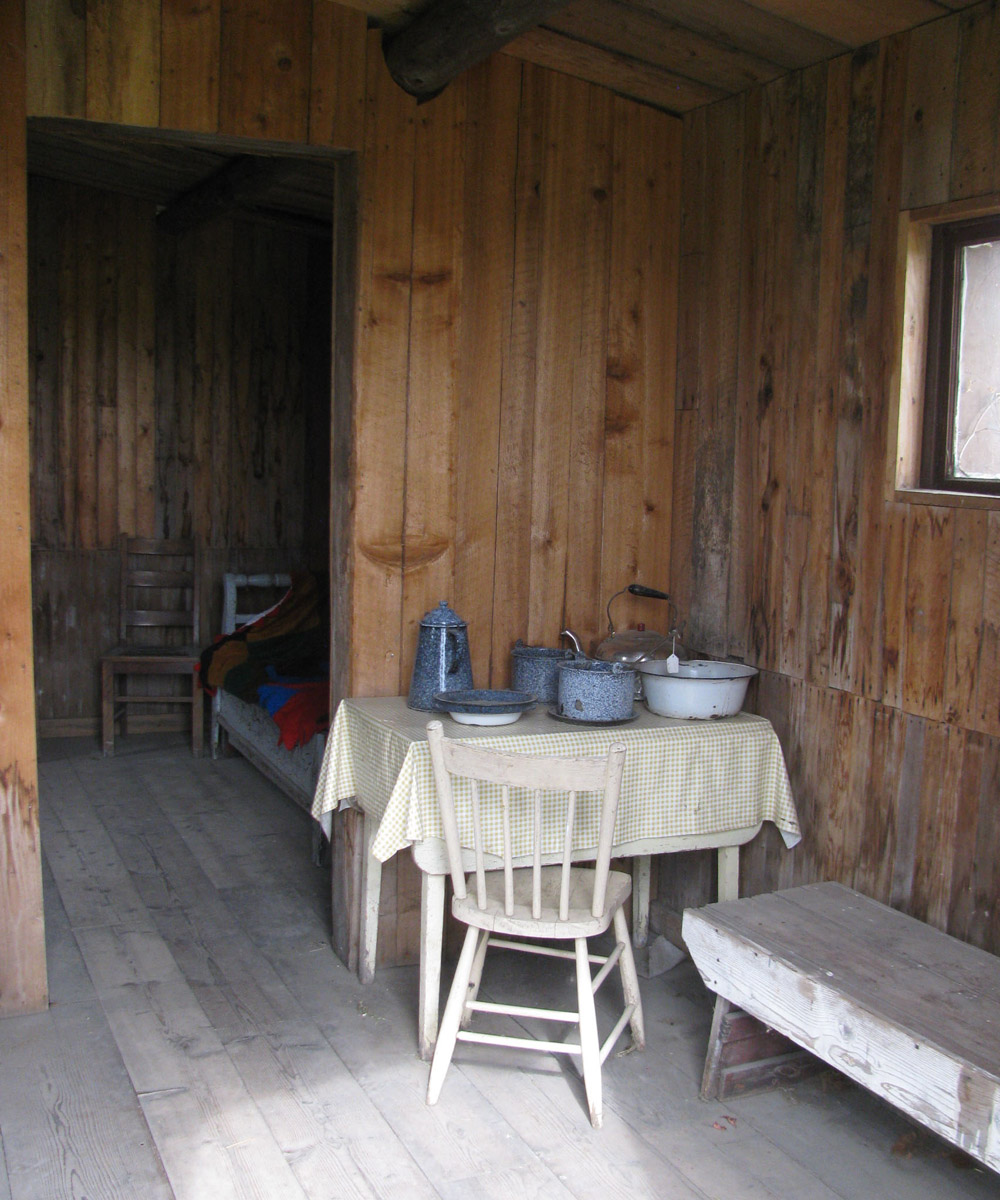Semlin (Sod House)
"Homes 'grown' out of the very soil"Semlin Sod House
 Semlin (sod house) exterior
Semlin (sod house) exterior
Story
In 1875 when Mennonite settlers were first arriving on Manitoba’s prairie they had limited resources to build houses and barns. A lack of trees did not make it any easier. The Mennonites relied on semiln or sod houses to live in; a type of housing they had first become familiar with in Russia.
A hole, approximately a meter deep (just over 3 feet), was dug and then walls of sod were built up around it. Poles were then laid across the walls and covered in sod creating the roof for the dwelling. The house was divided into two sections; one for the people and the other for the livestock. This made it easier to heat and look after the farm animals. Though sod houses provided much needed protection from the elements, they were still temporary and usually only used for a few years.
The Pembina Threshermen's Museum tells a story of skeptical settlers who lived in the Pembina Hills. They doubted that anyone could live on the southern Manitoba prairie without any trees to build a house.
“When these settlers saw the semlins built by the Mennonites, however, they decided that of course they could survive ... if they dug themselves a hole in the ground like the gopher did!”
 Semlin (sod house) interior
Semlin (sod house) interior